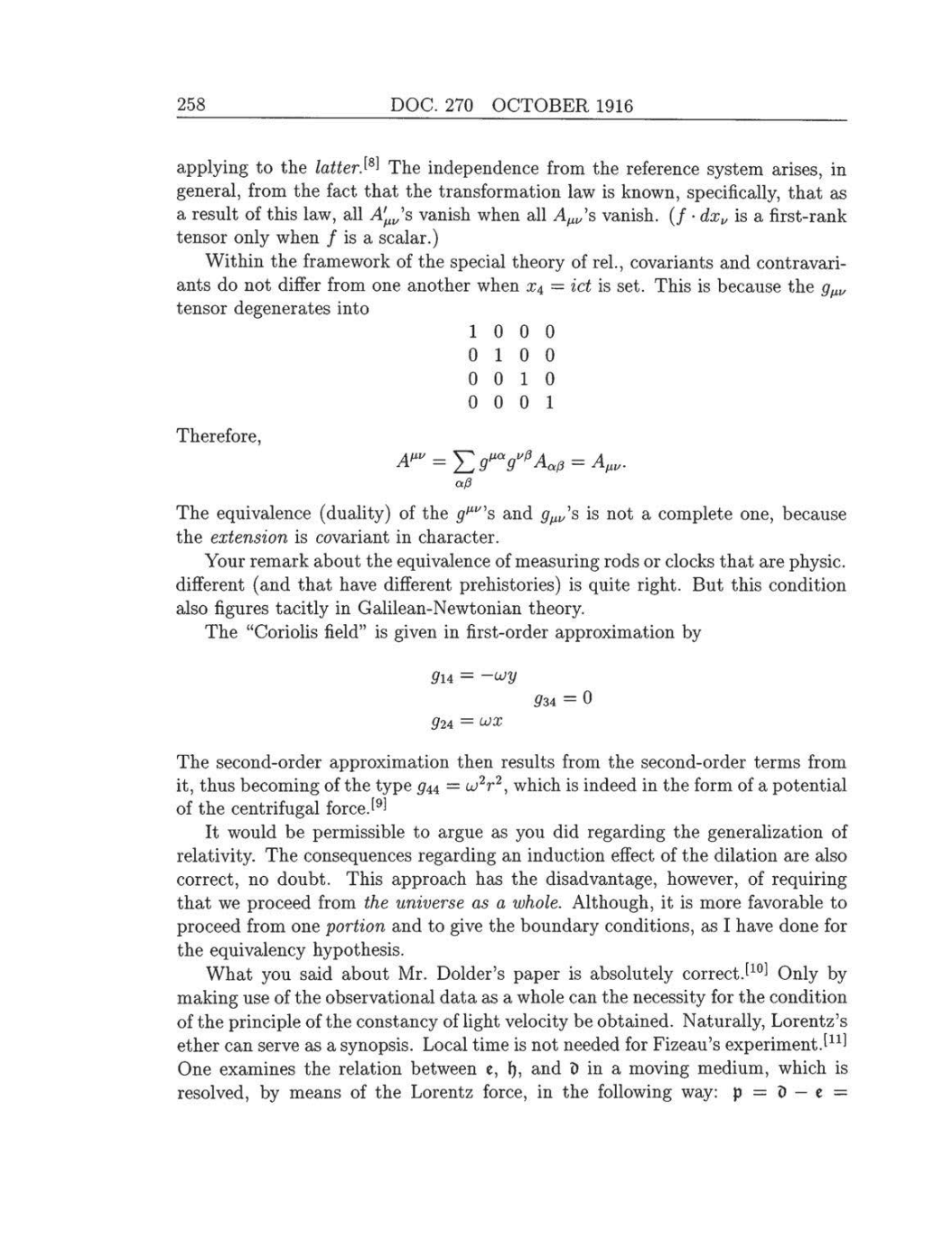258 DOC.
270
OCTOBER
1916
applying
to
the
latter.[8]
The
independence
from
the
reference
system
arises,
in
general,
from
the
fact
that the
transformation
law is
known, specifically,
that
as
a
result
of
this
law,
all
A'uv's
vanish when all
Auv’s
vanish,
(ƒ
.
dxv"
is
a
first-rank
tensor
only
when
ƒ
is
a scalar.)
Within the
framework
of
the
special theory
of
rel.,
covariants
and
contravari-
ants do
not
differ from
one
another
when
x4
=
ict
is
set. This
is
because
the
tensor
degenerates
into
1 0
0
0
0
1 0
0
0
0
1 0
0
0 0
1
Therefore,
Auv
=
^gßagußAaß
=
Auv.
aß
The
equivalence
(duality)
of
the
guv's
and
guv's
is not
a
complete one,
because
the
extension
is
covariant in character.
Your
remark about the
equivalence
of
measuring
rods
or
clocks
that
are
physic,
different
(and
that
have different
prehistories)
is
quite right.
But this
condition
also
figures
tacitly
in Galilean-Newtonian
theory.
The
“Coriolis
field” is
given
in first-order
approximation by
g14
=
wy
g34 =
0
g24 =
wX
The second-order
approximation
then
results from
the
second-order
terms
from
it,
thus
becoming
of the
type
g44
=
w2r2,
which
is
indeed in
the
form
of
a
potential
of
the
centrifugal
force.[9]
It
would be
permissible
to
argue
as
you
did
regarding
the
generalization
of
relativity.
The
consequences regarding
an
induction
effect
of
the dilation
are
also
correct,
no
doubt. This
approach
has
the
disadvantage,
however,
of
requiring
that
we proceed
from the universe
as a
whole.
Although,
it
is
more
favorable
to
proceed
from
one
portion
and
to
give
the
boundary
conditions,
as
I
have done for
the
equivalency hypothesis.
What
you
said
about
Mr. Dolder’s
paper
is
absolutely
correct.[10]
Only by
making
use
of the observational
data
as a
whole
can
the
necessity
for
the
condition
of the
principle
of the
constancy
of
light velocity
be obtained.
Naturally,
Lorentz’s
ether
can serve as a
synopsis.
Local time
is
not needed for Fizeau’s
experiment
[11]
One examines
the relation between
e,
h,
and
ö
in
a
moving medium,
which
is
resolved,
by means
of
the
Lorentz
force,
in
the
following
way:
p
= Ö
-
e
=
